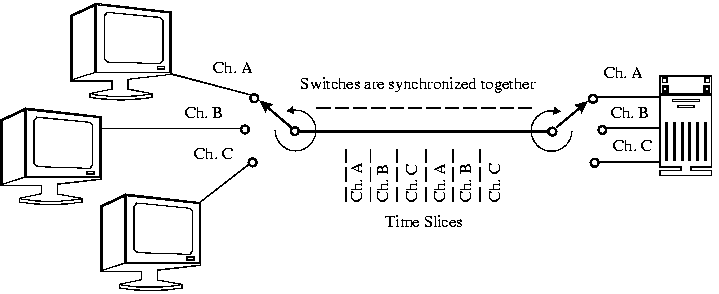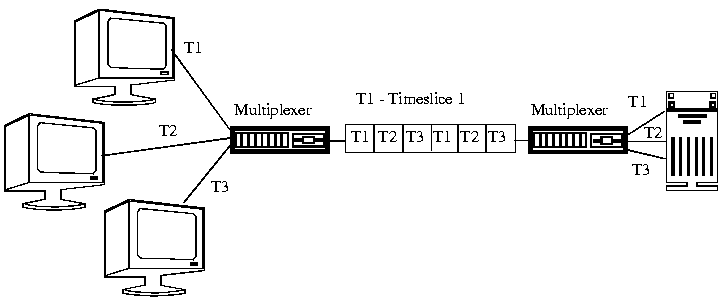| Introduction to Data Communications |
 Previous Previous
|
30b. TDM - Time Division Multiplexing |
Next  |
 30b. TDM - Time Division Multiplexing
30b. TDM - Time Division Multiplexing
Time Division Multiplexing is a technique where a short time sample of each channel is inserted into the multiplexed data stream. Each channel is sampled in turn and then the sequence is repeated. The sample period has to be fast enough to sample each channel according to the Nyquist Theory (2x highest frequency) and to be able to sample all the other channels within that same time period. It can be thought of as a very fast mechanical switch, selecting each channel for a very short time then going on to the next channel.

Each channel has a time slice assigned to it whether the terminal is being used or not. Again, to the send and receiving stations, it appears as if there is a single line connecting them. All lines originate in one location and end in one location. TDM is more efficient, easier to operate, less complex and less expensive than FDM.


